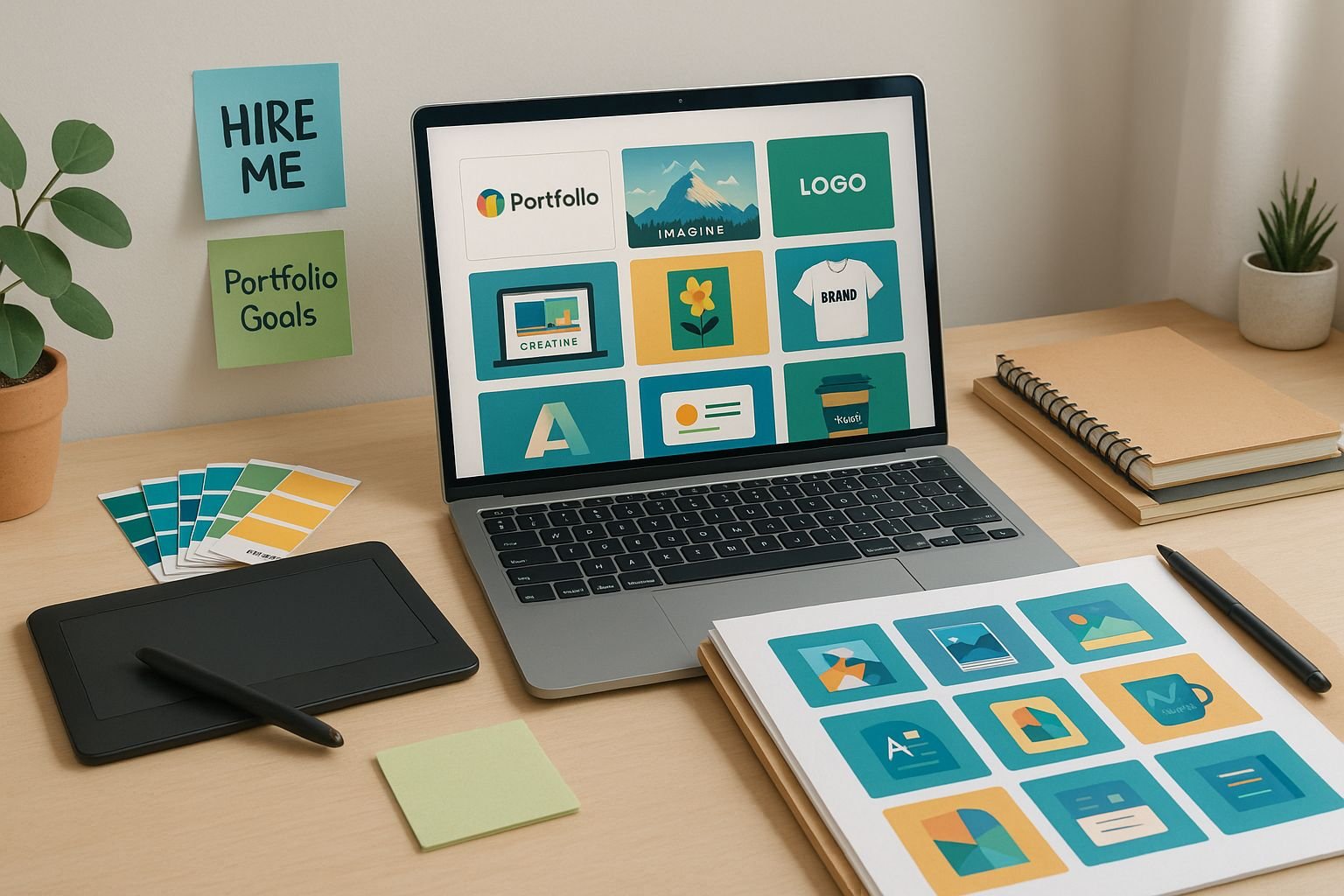How to Build a Job-Ready Portfolio as a Beginner Designer

Learn how to build a beginner design portfolio that impresses employers. Step-by-step guide to showcase skills, creativity, and land your first job.
The Beginner's Dilemma
For beginner designers, one question always comes first:
👉 "How do I get a job if I don't have a strong portfolio, and how do I build a portfolio without a job?"
This is the classic chicken-and-egg problem in creative careers. But here's the good news: you don't need years of client experience to create a portfolio that gets you hired.
In 2025, employers, agencies, and clients value skills, creativity, and presentation over long resumes. A job-ready portfolio is your ticket to proving what you can do.
Understand What Employers Look For
Before you design your portfolio, know your audience. Employers want to see:
Start With Personal or Practice Projects
If you don't have client work yet, create your own projects:
🔄 Redesign famous brands
e.g., reimagine a Coca-Cola ad with a modern twist
📱 Social media campaigns
Design posts for a fictional fashion brand
📦 Packaging mockups
Create packaging for a local organic juice
🎨 UI/UX redesign
Pick a popular app and give it a fresh interface
🎪 Event posters
Imagine a music festival and design its posters
Show the Process, Not Just the Final Design
A portfolio is not only about pretty visuals; it's about thinking like a designer. For each project, include:
Brief/Problem
What was the goal? (e.g., "Create an engaging poster for a student festival")
Research/Ideas
Mood boards, inspirations, sketches
Execution
Tools you used, iterations you tried
Final Output
The polished design
Quality Over Quantity
It's tempting to add every small design you've ever made — but resist.
5–10 excellent projects presented clearly
25 random designs with no story
Make It Multi-Dimensional
Employers love to see versatility. Include:
Branding Projects
Logos, stationery, packaging
Digital Graphics
Social media ads, web banners
Print Designs
Posters, brochures, flyers
Motion Graphics
Video edits (if multi-skilled)
UI/UX Mockups
Web or app designs
Use Mockups to Elevate Your Work
A flat logo on a white background looks boring. But put the same logo on a t-shirt, billboard, or product box using a mockup — and suddenly it looks professional.
Write Case Studies for Key Projects
Instead of just uploading images, write mini case studies:
- What problem were you solving?
- Why did you choose those colors/fonts?
- How does the design connect with the audience?
Keep It Well-Organized and Branded
Think of your portfolio as your personal brand website.
Color palette & typography
Home | Portfolio | About | Contact
Grid or case study format
Go Digital: Best Platforms for Beginners
You don't need a fancy website on Day 1. Start with:
Behance
Best for creative industries
Dribbble
Great for UI/UX snippets
Adobe Portfolio
Free with Creative Cloud
Canva Portfolio
Simple drag-and-drop
Personal Website
WordPress, Wix, Webflow
Update Regularly
A portfolio is a living document. Update it every 2–3 months with:
Common Mistakes Beginners Make
Frequently Asked Questions
Q1. How many projects should a beginner portfolio have?
👉 5–7 strong projects are enough to start. Quality beats quantity.
Q2. Do I need real client work in my portfolio?
👉 No. Personal projects, redesigns, and practice work are perfectly valid.
Q3. Should I include group projects?
👉 Yes, but highlight your role clearly (e.g., "Designed branding elements, collaborated on layout").
Q4. What's better: PDF portfolio or website?
👉 Both. Use PDF for quick email shares and a website link for broader exposure.
Q5. How do I make my portfolio stand out?
👉 Show process, creativity, and personality. Employers hire designers who bring ideas, not just execution.
Your Portfolio is Your Career Passport
Building a job-ready portfolio as a beginner designer is less about experience and more about showcasing your skills smartly. With just a handful of well-crafted projects, explained with clarity and presented with style, you can stand out to employers and clients alike.
👉 Remember: Your portfolio is your career passport. Treat it with care, update it often, and let it reflect your journey as a creative professional.
At RedSketch Academy, we don't just teach tools — we help students build portfolios that get them hired. In our Digital Graphic Design Mastery and Next-Gen Graphic Design Mastery (AI Edge) programs, every student graduates with a job-ready portfolio, personal branding, and real-world projects.